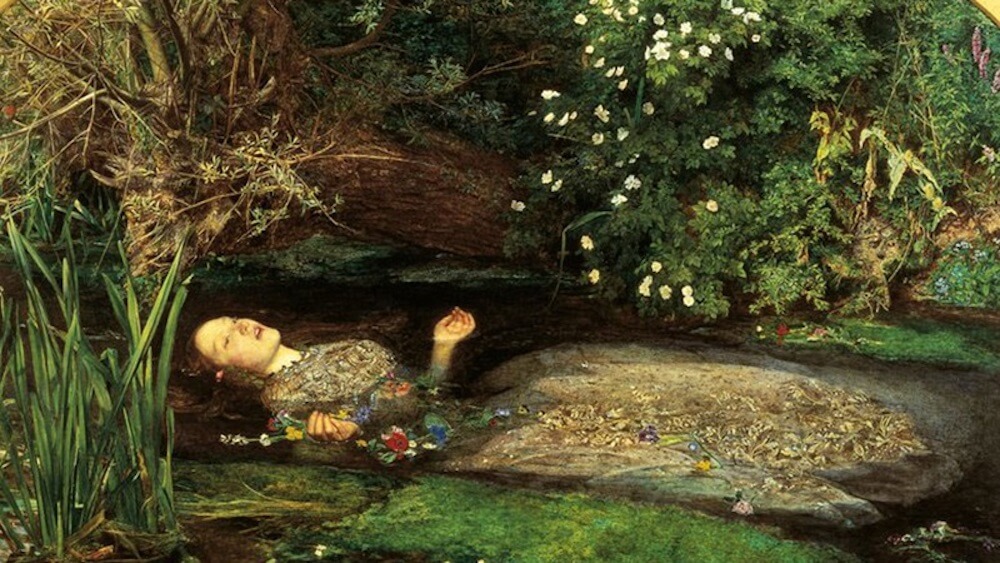Ophelia by Sir John Everett Millais: why is this painting so popular?
Widely referenced and hugely popular to this day, this painting perfectly embodies the time period and the artistic movement of Pre-Raphaelites. Let’s examine it more closely.

What’s the deal with Ophelia?
Ophelia by Sir John Everett Millais remains one of the most beloved British paintings. Let’s take a look at it again.
Created in 1852, this painting perfectly captures the spirit of that period:
– The continued admiration of Shakespeare
– The symbolic Victorian-era language of flowers
– The popular fascination with the lush nature of the English countryside
Additionally, it served as a strong proclamation of the values of the Pre-Raphaelite movement, which became quite influential—the importance of their art was comparable to that of Impressionists in France. Later in this text, we will learn more about the Pre-Raphaelites, too.
The painting still has an impact on modern culture and is widely referenced in popular media. For example, Nick Cave and Kylie Minogue used this instantly recognizable imagery in the video clip for their famous 1995 song “Where the Wild Roses Grow.” Lars von Trier recreated the scene in his movie Melancholia (2011).

First exhibited in 1852 in the Royal Art Academy, the painting was ridiculed by art critics, with one of them writing that it made him “think of a dairymaid in a frolic.”
Nonetheless, the image of Ophelia captured the minds of a wider audience. For example, Anne Thackeray (an acclaimed writer in her time and the daughter of William Thackeray), wrote her impression about the painting:
“Was it fairyland, or was it all real? That shining glen, that floating, radiant figure? I knew not what I saw, but the picture took hold of my imagination…” At the beginning of the 20th century, both the painting and the character of Ophelia became highly popular in East Asia. However, later, when Millais works were brought to Japan for an exhibition in 2008, the organizers chose not to use Ophelia on promotional posters, alarmed by the country’s growing suicide rate.
Nowadays, the painting is a part of a permanent exhibition in the Tate Gallery in London. The price is estimated at about £30 million.
Who is Ophelia and what else is in the picture?
Ophelia is a character of Shakespeare’s Hamlet, who drowns herself after her father dies and Hamlet rejects her. Maddened with grief, the girl falls into the water. She is swimming along in the stream, singing aloud and slowly going down.
Ophelia has always been one of the more popular female figures in art. Her tragic story is represented in theater, cinema, and fine arts. But Millais’ image of this Shakespearean heroine garnered special popularity.
The artist paid particular attention to details, from the blooming nature and water splashes to the pattern on the girl’s dress. The heroine seems frozen somewhere between life and death, making us witness the fading glimmer of her skin.
In the Victorian period, the symbolic flower language was very in vogue, so every bouquet was a message on its own. Millais used flora to highlight the central theme of the painting.
